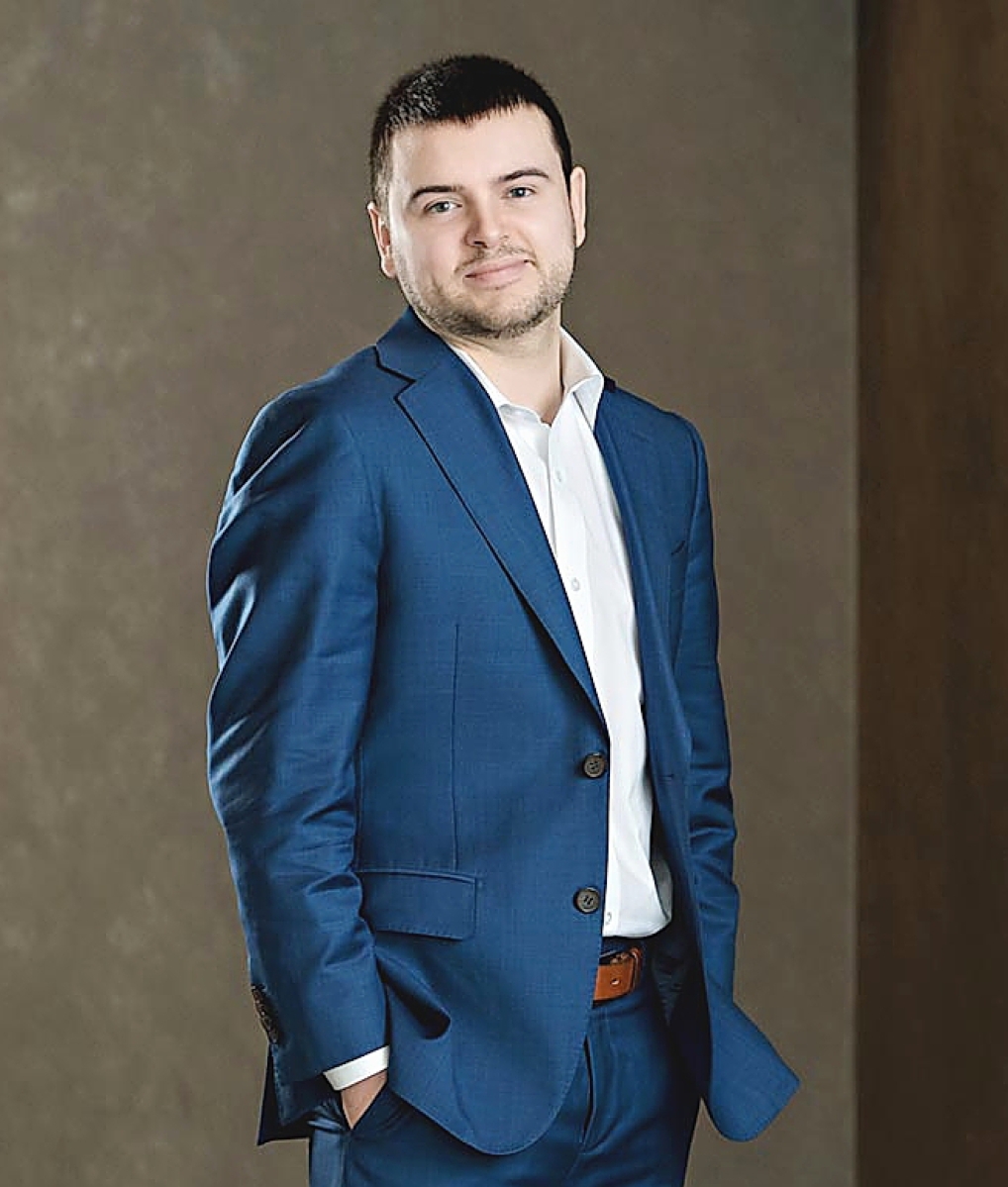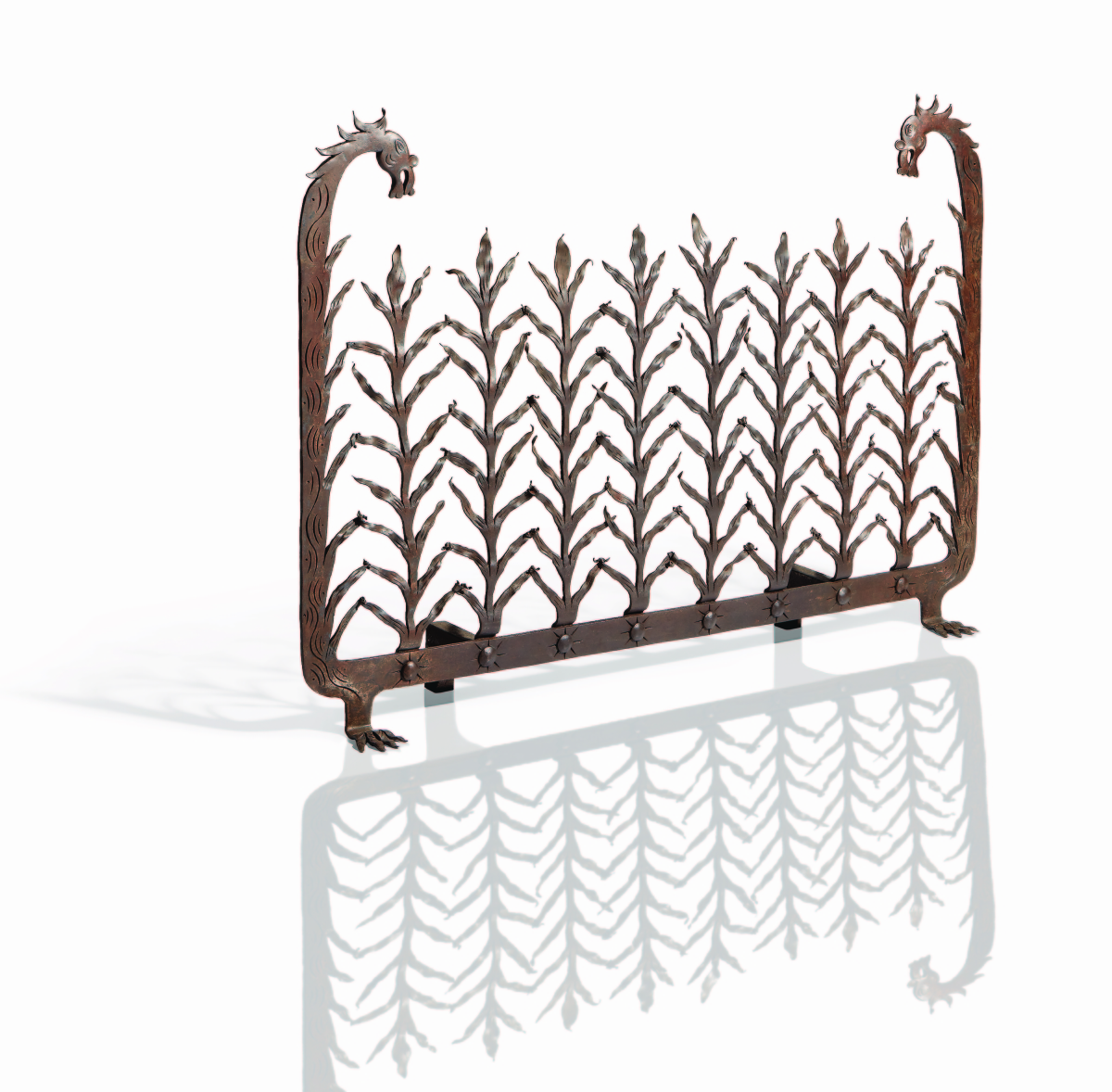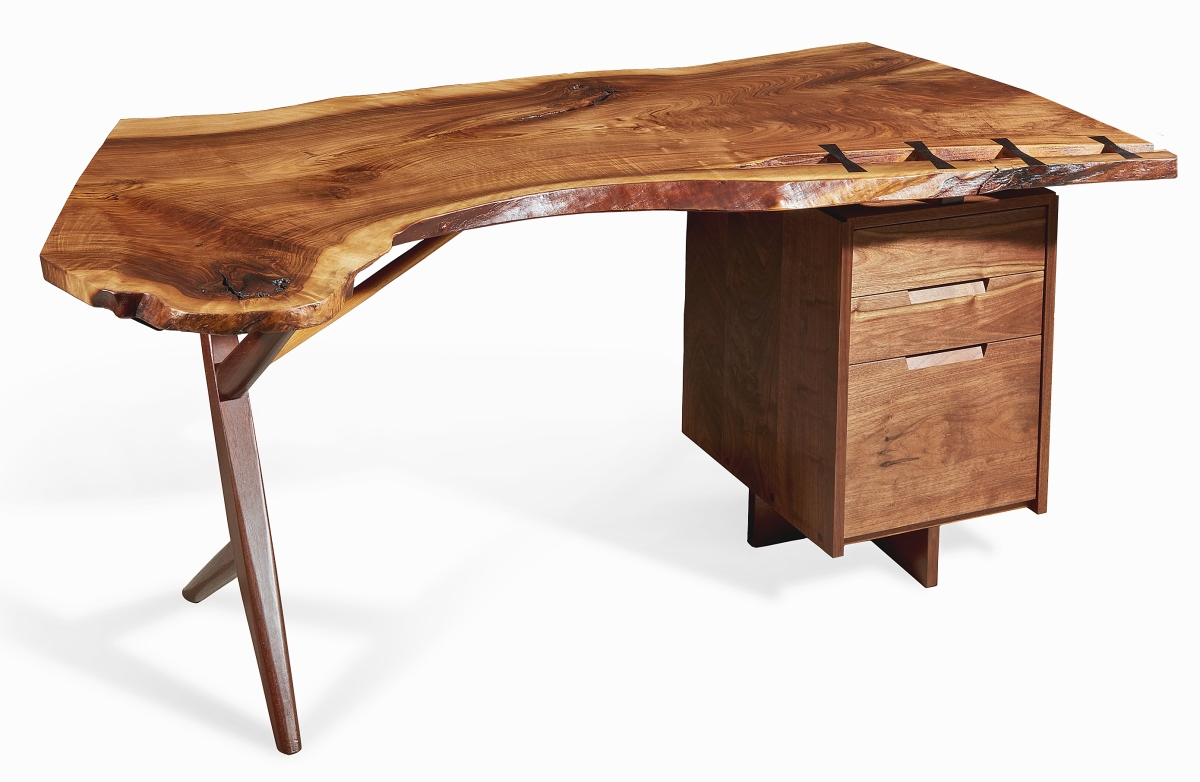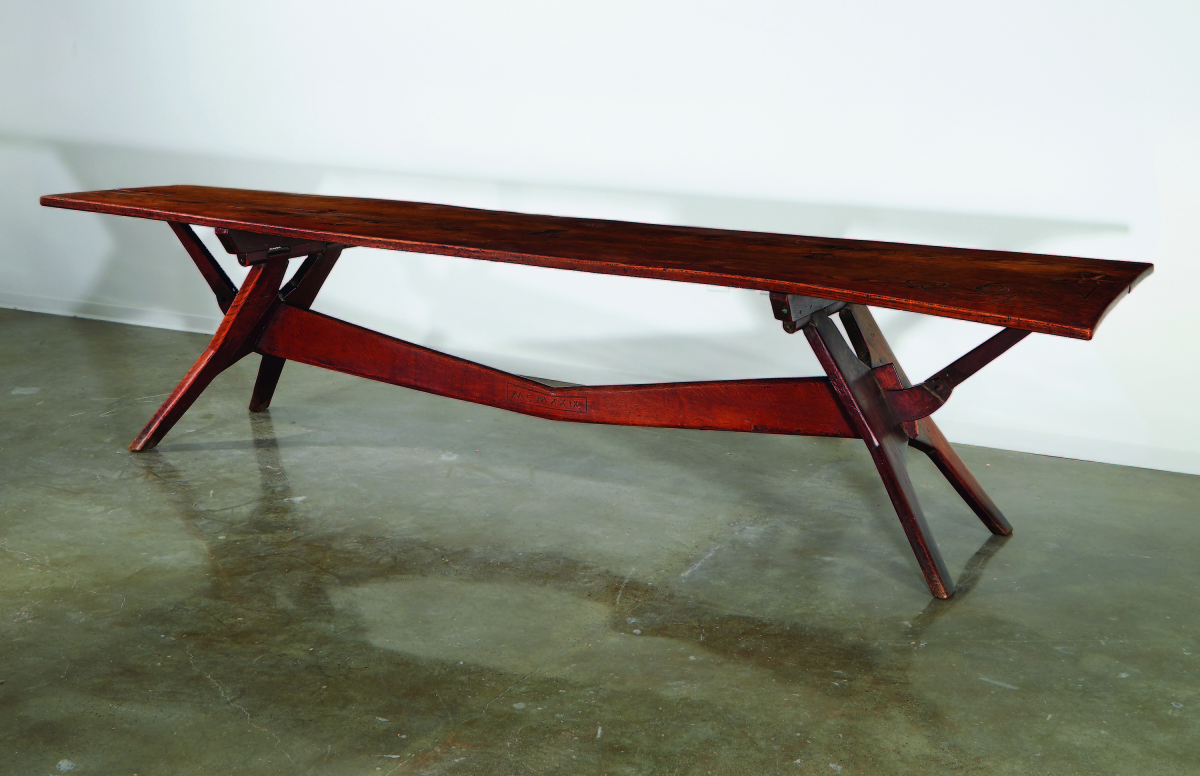Blue-chip works on paper soared past presale estimates in Freeman’s art and design auction in March, achieving an impressive 92 percent sell-through rate and testifying to the strength of the prints and multiples market. Overseeing the sale was Tim Andreadis, Freeman’s director of the decorative arts and design division. His areas of specialty include studio and contemporary craft, postwar and prewar design. We caught up with him between sales to gauge his love of Twentieth Century design, which he says extends beyond the doors of Freeman’s.
So, outside of the holding areas of Freeman’s, where do you find exemplary Twentieth Century design in and around Philadelphia?
The areas surrounding Philadelphia and the Delaware Valley have been historically rich with artists and makers. Those traditions continued through the Twentieth Century with both self-taught and school-trained designers, woodworkers and craftspeople. Aside from the Philadelphia Museum of Art, the Michener Museum and Woodmere Museum of Art, each with stellar collections of works by regional makers, the Wharton Esherick Museum in Malvern and George Nakashima Studio in New Hope are not to be missed. What I love so much about both these sites is their sense of place. You are immediately transported into Esherick and Nakashima’s worlds, seeing their finished masterpieces in the context of where they lived and worked. It’s an inspirational pilgrimage for those who love craft and design.
When did you join the firm, and where were you before that?
I joined Freeman’s in July of 2013, prior to which time I was working as a specialist at Rago auctions in New Jersey, having finished up my masters degree through the Winterthur program in 2011. The auction world was where I always wanted to be and was thrilled to find a home at Freeman’s among so many dedicated and talented colleagues. As America’s oldest auction house and a staple of Philadelphia since 1805, I think often of all the amazing works of art that Freeman’s has had the privilege to bring to market. With each sale we work to build upon and advance that tradition.
In the time you’ve been with Freeman’s, you’ve brought key works of Twentieth Century and Midcentury Modern design to market. Can you name a few examples?
When I started at Freeman’s in 2013, I was aware of the exceptional works of Pennsylvania craft and design that had come through Freeman’s in years past, many from the homes of families and collectors who acquired the works directly from the artist. There’ve been some real discoveries – from an early “Chieftain” chair designed by Danish design icon Finn Juhl to a pair of glazed ceramic birds by French postwar ceramicist Georges Jouve, uncovered during a routine appraisal. I’ve been lucky to handle hundreds of works by George Nakashima and despite the fact that Nakashima forms were replicated for various clients, there’s always a unique character to each one that sometimes says more about the relationship between George and the client than it does the “life of the tree.” My favorite piece, however, is always the one yet to be consigned!
What were some of the upside surprises in the March 23 art and design sale?
Our Art + Design auctions are a lot of fun and feature a real variety of works by artists and designers of different periods. Prints and works on paper did incredibly well, a testament to the increased appetite for modestly priced works by recognizable artists. The market for works by name-brand artists under the $20,000 price-point has just skyrocketed in recent years with millennials and Gen-Xers discovering and purchasing a lot of these works online, sometimes for much less than they might have imagined.
The sales seem structured to present a variety of works in both fine art and design. Is it a good formula, mixing up artworks by modern masters like Nakashima along with Tiffany Studios and paintings by Roy Lichtenstein and Ellsworth Kelly?
What I like about the Art + Design series is that it doesn’t try to advance one particular viewpoint or approach to collecting. When you present artists in different media across a 100-plus-year period, bidders play the role of curator and can draw their own connections. I’m always delighted to see what will attract the most interest.
You also oversee the firm’s annual Pennsylvania sale, which celebrates artists from the region. Last November, the Hedgerow Theater contributed some great Wharton Esherick pieces, including the sale’s top lot at $187,500 for the “Thunder Table.” What have you got cooking for this year?
We’ll be splitting our Pennsylvania offerings between our Americana (November) and Design (December) auctions this year as we look to grow and expand the category to match the growing interest in these artist’s works. We’re looking forward to our fall Design season, which is shaping up to be our strongest ever, with works of important blue-chip French design to be offered alongside our Pennsylvania heroes, George Nakashima and Harry Bertoia. I can’t spill all the beans just yet, but we are very excited!
Your home in Carversville is a stone’s throw from the Nakashima studio in New Hope. How would you gauge the importance of New Hope craftsmen to the nation’s reputation for Twentieth Century design?
Through her New York gallery America House, Aileen Osborne Webb exposed the work of New Hope craftsmen Paul Evans and Phillip Lloyd Powell to an international audience. Publications like Craft Horizons also provided an outlet for the public to encounter these works and explore the art scene in New Hope and its environs. George Nakashima, while also in New Hope, operated somewhat apart from the New Hope “scene,” though no doubt was a beneficiary of the folks coming in from New York to see shows at the Bucks County Playhouse and attend other area attractions. By the 1970s George had really put himself on the map with commissions from Nelson Rockefeller and others that garnered him international exposure. Perhaps no event had greater exposure or drama than when the spiral staircase from the Wharton Esherick studio was disassembled and transported for exhibition at the 1940 New York World’s Fair as part of an attraction titled “A Pennsylvania Hill House” designed by Philadelphia architect George Howe and furnished with works by Esherick. The rugged, heroic modernity of American craft in the inter-wars and postwar period is nowhere more prevalent or important than in the Philadelphia environs.
To which countries are the Nakashima pieces going? From where are new collectors emerging?
The newest group of buyers for vintage Nakashima works are in Hong Kong and Tokyo, but the fastest growing is in France and the United States. As competition has grown for Nakashima’s most sought-after and sublime creations, so has the market for what you might call the “entry level” Nakashima tables and chair sets.
You have a design sale coming up in June. Can you give us a sneak peek at some of the expected key lots?
We have a small, but rich group of property in our June auction including a newly rediscovered fire screen by Samuel Yellin. The fire screen was known to us from a published archival photograph – showing the screen as it was photographed by the Yellin studio at the time of its completion – but the whereabouts of the screen was unknown until it walked in the door! We also have a strong selection of works by George Nakashima, including one of the very best “Conoid” desks I have ever seen or handled. Other works in the sale include an iconic silver tea set by Michael Graves and an enameled bowl by June Schwarz. It’s a beautiful little sale.
-W.A. Demers
















